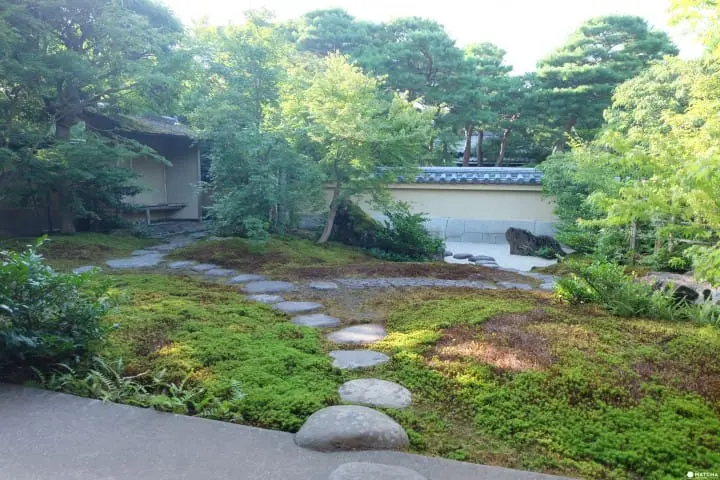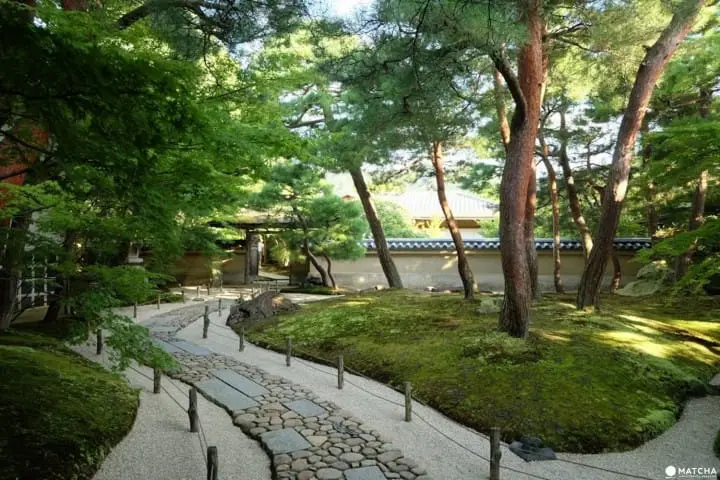Start planning your trip


Today we take you to the magnificent Japanese gardens at the Adachi Museum of Art in Shimane prefecture. Here you can enjoy the beauty of the natural surroundings and also see an impressive collection of Japanese art.
The Adachi Museum of Art is located in Shimane prefecture's Yasugi city. This highly regarded museum is located on a site covering an area of 50,000 tsubo, or about 165,000 square meters. The impressive art collection focuses on Japanese painting, and the magnificent and grand gardens, which include a dry landscape garden, harmonize with the surrounding natural environment.
The gardens here have been ranked number one for an impressive 17 consecutive years (as of 2020) among Japanese gardens in 'SUKIYA LIVING MAGAZINE', an American publication devoted exclusively to Japanese-style gardens, and now, both in name and reality, they serve as Japan's representative gardens.
If you look out from the main building of this museum you can see the many gardens and inside there's also a collection of Japanese painting and ceramics on display, and in the new annex building there's an exhibition of modern Japanese painting. Let's go over to the main building and take a look at the gardens.
The Adachi Museum of Art's fundamental philosophy is to create a space where Japanese art can exist in harmony with the surrounding Japanese gardens. For starters, on the first floor of the main building you can enjoy the outside view of the gardens, and on the second floor, you can look at the modern Japanese art collection which includes works by Yokoyama Taikan, one of the masters of Japanese painting. One of Yokoyama's biggest fans was none other than museum founder Zenko Adachi himself, who tirelessly collected many of the master's works of art and added them to the museum's collection.
Looking like something right out of a painting, these elegant and refined gardens exemplify the aesthetics of wabi-sabi* and showcase the changing scenery of each distinct season. As you savor the lingering sensation of being moved by the beauty of the gardens, it's the museum's hope that you also understand the appeal of Japanese art, since visiting here allows you to come into contact with the splendor of both the gardens and the art work.
*Wabi-sabi is a concept in traditional Japanese aesthetics that has been interpreted in many different ways, but is often described as the beauty and wisdom of imperfection.
Once inside the main building, the first thing you can see as you look outside is the kokeniwa, or Moss Garden. The green of the moss and the white gravel form a nice contrast in this attractive garden. When autumn arrives the changing colors of the foliage add a refreshing accent.
The Tea House at the Garden of Juryu-an has a unique flavor and charm to it. You can look inside the tea house and enjoy drinking green tea, and better yet, you can have the garden all to yourself. It's the only garden at the museum where visitors are permitted to go around and explore, and here inside the grounds you can walk from place to place via stepping stones (admission is 1500 yen).
The garden that continues as you head towards the tea garden is also beautiful. Anyone can walk through and enjoy looking at this garden. During the fall season you can see the changing colors of the leaves in both of these gardens.
The next point of interest is the museum's karesansui garden, or Dry Landscape Garden.
A dry landscape garden is unique in that water is not used, but instead other elements are utilized to express the image of mountains and water. The large stones in the center of the garden represent steep mountains, and originating from a nearby waterfall, a flowing mountain stream made of white gravel eventually widens into a large river.
Being able to look at the dry landscape garden just as you would a painting, is one way to admire and appreciate the gardens here at the Adachi Museum of Art.
The window inside the building acts as a picture frame allowing you to enjoy the ever-changing mood and atmosphere brought on by the different seasons, the day's weather and the time of day that you visit. Looking out through this frame makes for an interesting experience because it causes certain elements to stand out; the large and small trees, the way the rocks are positioned to create a sense of balance, and the beauty of the lawn and its ridge.
Also adding some additional flavor to the dry landscape garden is the Kikaku Waterfall. It's based on the image of 'Nachi Waterfall', one of Yokoyama Taikan's paintings, which are at the core of the museum's Japanese art collection. This man made waterfall was constructed in 1978, to commemorate the 8th anniversary of the museum's opening.
The Kikaku Waterfall is not actually on the garden grounds. However, the gardens here were designed to visually incorporate the surrounding natural environment and its elements, creating an unforgettable view. The mountains and the cliffs in the background form part of the overall scenery, giving the garden a sense of depth and grandeur.
The next attraction that comes into view is the Pond Garden. Through the implementation of some new techniques, visitors here can experience a new kind of feeling and sensation.
As you look out through a tall and narrow window placed in the back of the tokonoma (alcove) inside the museum, the picturesque image of the pond garden takes on the role of a "living" hanging scroll. With the waterfall serving as a focal point, you can admire the view much like you would a beautiful painting.
In this exquisite garden, white gravel hills are rhythmically dotted with pine trees, both large and small. Hakusaseishotei, or White Gravel and Pine Garden, is the one garden founder Zenko Adachi put all his energy into. The garden symbolizes a work of art entitled Hakushaseisho ('Beautiful pine beach') by Yokoyama Taikan, one of the leading figures in modern Japanese art.
From the mouth of the waterfall constructed at the back of the garden, it looks as though the water is flowing through a valley, twisting and turning until it empties itself out into the pond in the foreground. The design of the garden makes its visual height seem lower than it actually is and gives the garden a feeling of spreading out horizontally.
This is a Japanese-style garden that spreads out across the expansive grounds of the museum. Needless to say, seeing the beauty of this garden was a moving experience for me. I was surprised by how no stone has been left unturned and how every possible thing is being done behind the scenes at Japan's number one garden! For example, taking the mountains which are off-site and making them part of the garden's overall view, and exclusively employing seven gardeners who come here every day without fail to perform their duties of looking after and fine-tuning the garden.
Photo courtesy of Adachi Museum of Art
With the superb and splendid images of the gardens still lingering fresh in your mind, why not head up to the second floor? Greeting you here is a wonderful collection of Japanese art, all carefully selected by museum founder, Zenko Adachi. Starting with Yokoyama Taikan, the collection houses a large number of masterpieces by various artists who built the world of modern Japanese painting into what it is today. In order to enjoy the collection along with the changing of the seasons, special exhibitions are held four times throughout the year, and at any given time there are up to 70 art pieces on display.
The gorgeous gardens at the Adachi Museum of Art are definitely worth seeing, regardless of where you view them from. After you see the beauty of the changing seasons up close with your own eyes, the magnificence of the Japanese art will surely make an unforgettable impression on you!
Written by









